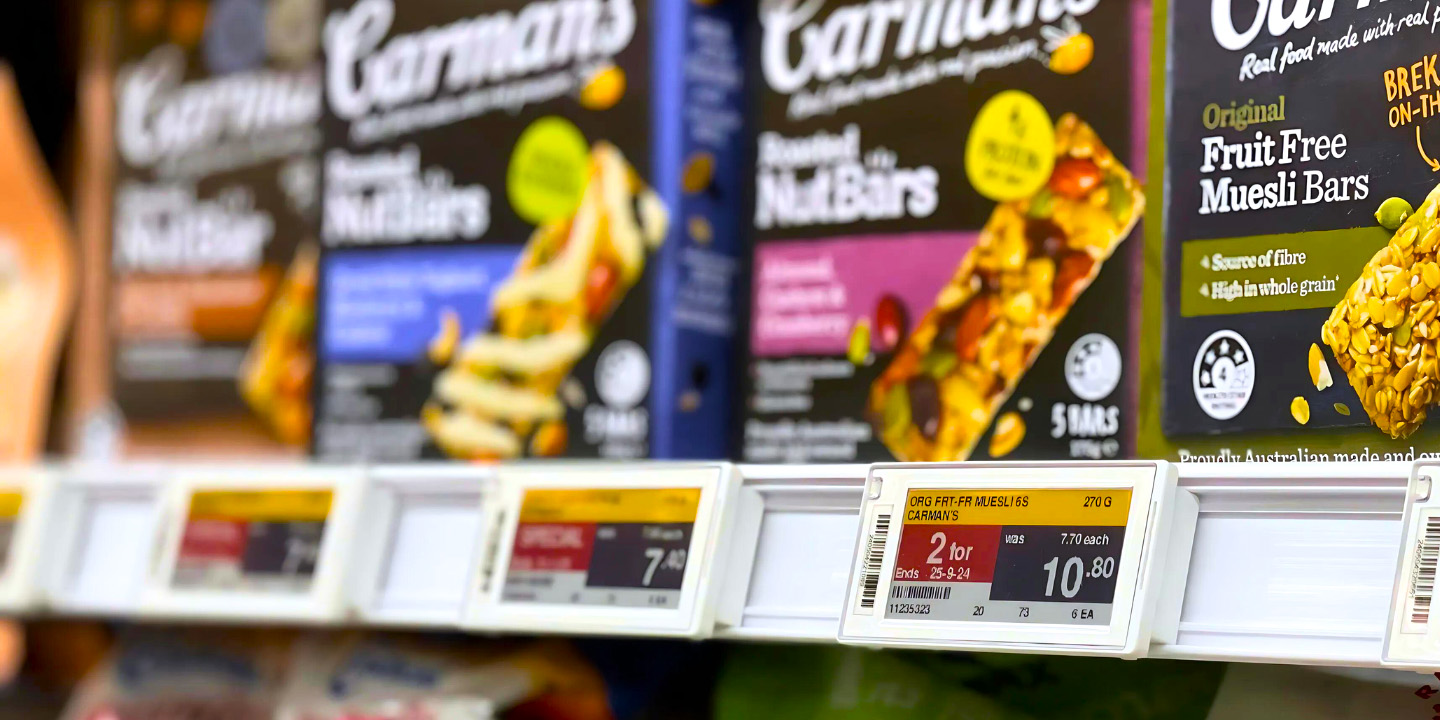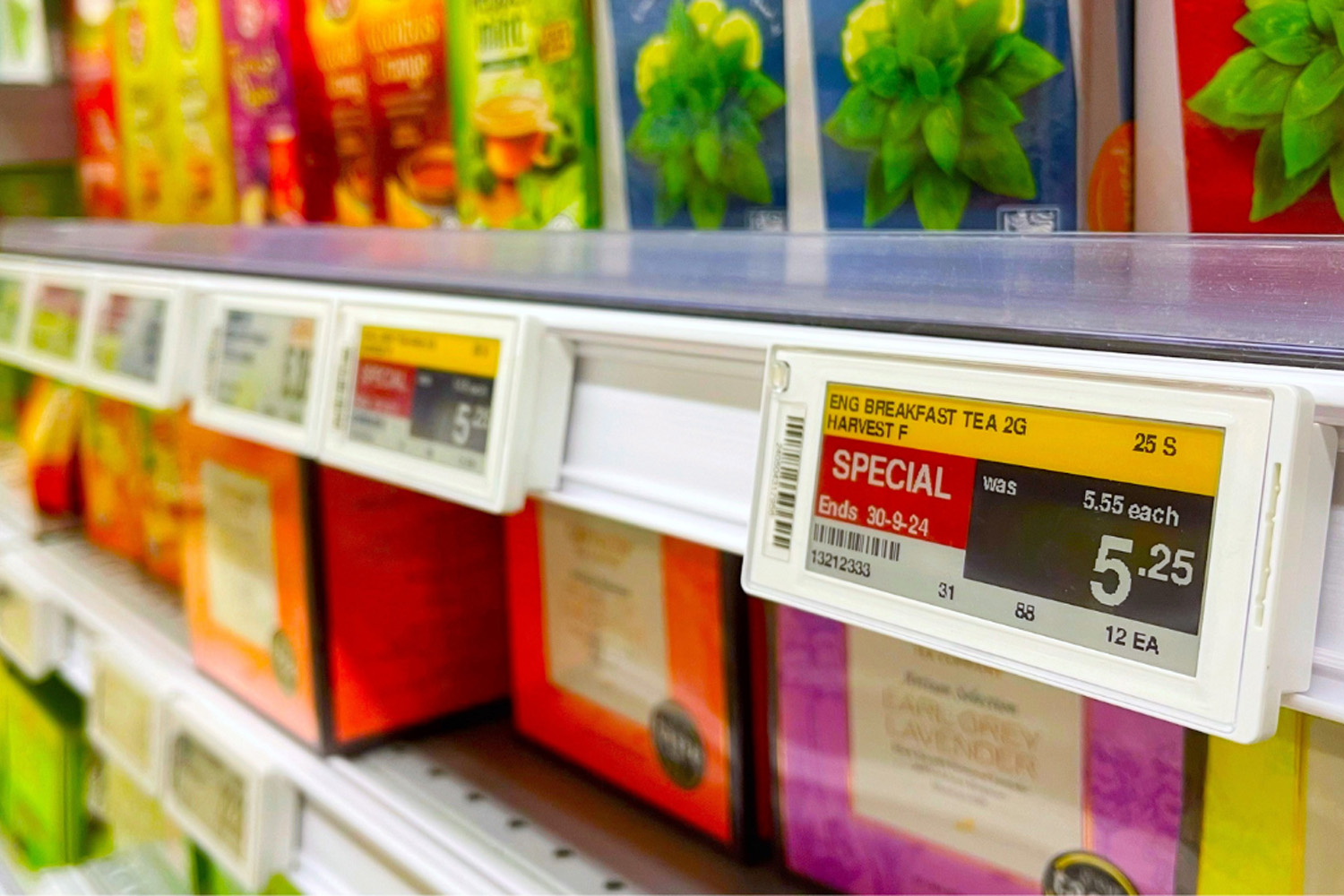
What are Electronic Shelf Labels (ESL) and what are their benefits?
The Retail industry is constantly changing and evolving, seeing new technology being created and implemented across the board. One of the most significant changes to physical stores over the past few years is the evolution of Electronic Shelf Labels (ESLs), making manual pricing updates a thing of the past.
Moving from manual pricing to ESLs allows retailers to adopt more robust sales strategies and seamlessly adjust their prices according to external variables such as market fluctuations, competitor pricing and seasonality.
Electronic Shelf Labels, otherwise known as Digital Shelf Labels, are a replacement for paper labels found on the shelves of stores all over the world. ESLs are essentially small screens that attach to the shelving, and whilst on the surface they serve the same purpose, this fully digital replacement revolutionises store management and operation.
As well as being kinder to the environment due to the waste reduction, they save a huge amount of time as they can be updated from a central location without the need to send staff to change each label every time pricing changes.
DIGI’s range of Electronic Shelf Labels blends aesthetics with performance. The smart solution now comes in a range of new sizes, longer battery life, vivid 4-colour display, 7 LED colours, 2 housing colour options and removable batteries.
Setup is straightforward, requiring just the labels, an RF station and a PDA for initialisation. Once installed, the ESL network is fully scalable, allowing more labels to be added as business requirements change.
Each ESL is part of a network, linked through Wi-Fi to a central RF station. The RF station allows data from your POS server to be fed through to each label, meaning pricing can be managed and updated remotely from the head office for those with multiple stores, or the back office for smaller outlets.

Improved customer experience
With real-time pricing updates, customers can trust that the display prices are accurate and up-to-date, reducing the possibility of confusion and improving their overall experience. Additionally, customers are better informed about products as each ESL can display relevant information as well as the price. DIGI InfoTag ESLs are available in a range of sizes, larger screen sizes allow more in-depth product details to be on display, helping customers to make better-informed decisions.
Dynamic pricing
Electronic Shelf Labels enable dynamic pricing strategies. This means that retailers can quickly respond to market conditions, competitor pricing, and other factors that affect their pricing. This adaptability has a direct impact on profits and sales margins.
Better in-store promotion
Better in-store promotion leads to higher volumes of sales and increased foot traffic. Electronic shelf labels bolster this by enabling quick price adjustments and scheduled promotions, as well as display detailed product information such as inventory levels and even ratings.
Reduce operational costs
Updating traditional price tags is very labour-intensive, time-consuming and prone to human error. ESLs automate this process, reducing labour dependency and minimising pricing errors, leading to improved profit margins and customer satisfaction.
Data-led inventory management
With real-time data integration, ESLs help to improve inventory management. Access to up-to-date product pricing helps maintain correct stock levels, reducing overstocking and other issues. ‘Low stock’ or ‘out-of-stock’ statuses are also automated thanks to the integration, providing immediate notification to customers and staff. This real-time visibility ensures better decisions are made about stock, ensuring that popular products are always in stock.
Omnichannel retail
ESLs bring continuity between in-store and online pricing, supporting omnichannel retail strategies. Ensuring prices are the same across the board is crucial for providing a seamless shopping experience and building trust.
